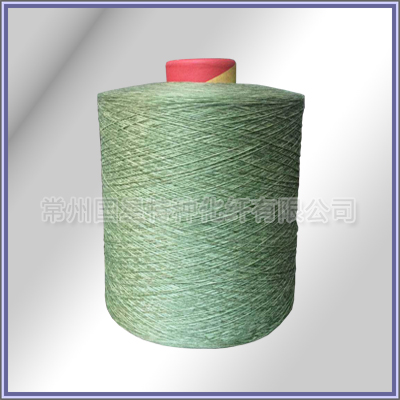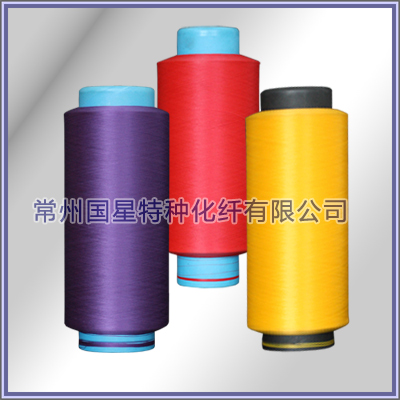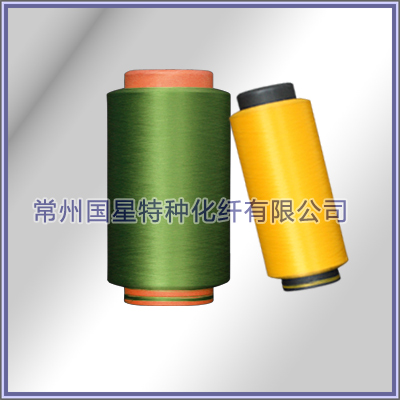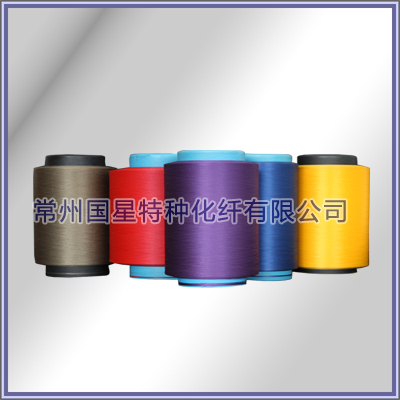At present, the textile industry has entered a new period of development. This period is a crucial period for the industrial upgrading of the textile industry. On the one hand, a number of advantageous enterprises are improving their competitiveness through continuous innovation. The elements of modern enterprise, such as innovation awareness, brand influence, creative culture, new technology revolution, creativity, etc., are affecting the development track of the textile industry.
On the other hand, in recent years, the impact of international oil price fluctuations, the price of chemical fiber raw materials has risen, and the price of cotton is unstable, which has a great impact on the production costs of textile enterprises. The profit margin of some enterprises tends to decline, and even in the state of capital preservation; there are still a few companies that are under pressure to lose money. At the same time, deep-seated problems such as insufficient independent innovation capability and serious structural contradictions have become more and more prominent. Since the financial crisis, with the changes in the domestic policy environment and the international market environment, the development of the textile industry is facing new enormous pressures and challenges.
Textile is an ancient and vital science that plays a pivotal role in the history of human civilization. In history, China's textiles have played an important role in the development of China's politics, economy and culture. At the same time, China's textile technology and culture have made outstanding contributions to the world's textiles through the Silk Road and promoted textiles in China and around the world. Industry development and economic and cultural exchanges.
First, the importance of the textile industry in China's economic development
(I) Overview of the importance of the textile industry to China's economic development
China is the world's largest producer and exporter of textiles and garments. The sustained and steady growth of textile and apparel exports is crucial to ensuring China's foreign exchange reserves, balance of payments, stability of the RMB exchange rate, social employment and sustainable development of the textile industry. With the rapid development of China's economy, the Chinese textile industry has created a large number of jobs for the Chinese labor force, and it has also created a domestic consumer group with the ability to pay.
(II) The impact of the textile industry on China's economic development
Since the reform and opening up, China's textile industry has developed rapidly and has obvious comparative advantages in the international arena. It has played a major role in accumulating the national economy, solving employment, improving people's living standards, exporting foreign exchange, and supporting the industry. At the same time, it has also actively promoted the solution of the three rural issues and the improvement of rural urbanization. With the continuous growth of domestic demand and the expansion of the international market, the textile industry will continue to grow rapidly.
Second, the status quo of China's textile industry development
(1) Development achievements of China's textile industry
At present, China has the largest textile industry system in the world with relatively complete industrial chain. From the beginning of textile raw material production (including natural and chemical fiber), textile, weaving, dyeing and finishing to garment and other textile processing, it has formed upstream and downstream. Cohesion and supporting production have become the first producers and exporters of global textile and apparel.
(2) Current problems in China's textile industry
1. The technical equipment is backward and the new product development is insufficient. According to statistics, the output value of textile industry, garment industry and chemical fiber manufacturing industry in China is about 61%, 28% and 11% respectively. In addition to chemical fiber production technology and clothing backbone enterprises, the sewing equipment is close to the international advanced level. In addition, traditional processes such as spinning, weaving, dyeing and finishing have a large gap with the world level.
2. The standard is low. At present, China's textile enterprises are still in the low-end production stage. About 80% of the companies produce low-end products, 6% produce low-end products, 4% produce low-quality products, and only 10% produce high-quality products.
3. Lack of high-quality human resources. The industry lacks talents in brand operations, capital operations, and international exchanges, and lacks international business experience and compound talents that adapt to international competition.
4. The degree of enterprise information is not high. Industry software development strength is weak, software products are few, enterprise management software application ratio is low, informationization penetration rate is low, e-commerce is slow to start, most enterprise management methods are backward, it is difficult to establish small batches, multiple varieties, high quality, fast delivery The rapid response mechanism of the goods market.
5. Lack of brand management philosophy. Traditional home textiles are numerous, small in scale, single in product, and the proportion of processing trade is still large. In response to the lack of international competition means, it is in the stage of integration.
6. Labor costs have risen sharply. In recent years, the country has gradually improved and introduced a series of labor and social security measures. It has the first challenge to test and test China's most representative labor-intensive industry--the textile industry. There are many employees in the textile industry, along with labor compensation and labor insurance. With the increase in expenditures, the labor costs of enterprises have been rising, squeezing the profit margin of enterprises. In order to recruit workers and retain people, many textile enterprises have to give more favorable treatment to front-line women workers and improve their labor compensation.
7. Financing difficulties and increased risks. The development of an enterprise is inseparable from the support of funds. It requires funds for the upgrading of existing equipment. The research and development requires funds. Too much inventory products need to be supplemented with liquid funds. These are not enough for the company��s own funds. Funding support. The large amount of capital demanded by cotton spinning enterprises and the sluggish industry have made the capital turnover slower and the two funds occupied higher. Commercial banks are currently adopting a cautious attitude toward the funding of textile companies. The loan conditions are harsh. Some enterprises have no collateral. It is difficult for banks to deposit funds, and some even reduce the loan quota of textile enterprises.
III. Suggestions for promoting the development of the textile industry
At present, the international market for textile and garment industry is over-represented, and the advantages of differential and functional commodities are prominent. The friction caused by trade barriers such as special safeguard measures, anti-dumping, and technological environmental protection is increasing. Although the domestic market is large, the industrial development is often rapid. The market competition is becoming more and more fierce, and the characteristics of ��high cost and high risk�� of the industry are becoming more and more obvious. The development of the textile industry must be based on the domestic market and open up the international market.
Take the scientific development concept to take the overall situation, seize strategic opportunities, update development concepts, accelerate independent innovation, promote industrial upgrading, improve enterprise management, continuously optimize technical equipment structure, product grade structure, market trade structure, and give full play to market allocation resources. The basic role and the guiding role of national industrial policies, standardize the market competition environment, improve the comprehensive competitiveness of the textile industry, enhance the cultural, scientific and technological connotation and marketing methods contained in textiles, accelerate the transformation of economic growth mode, and strive to achieve a better textile industry. Fast development.
(1) Strengthening the construction of the textile market and promoting the development of the textile industry by the market.
It is necessary to scientifically and rationally plan market construction, give full play to the huge traction and driving role of the market in the process of industrial development, and enhance the level and level of industrial development. The government should strengthen macro guidance on the development of the textile industry and provide necessary policy support to create a relaxed external environment for the textile industry to get out of trouble.
First, improve the development plan of the textile industry in the city, and provide guiding opinions on enterprise layout, total capacity control, equipment renewal and other aspects to avoid low-level redundant construction; second, implement financial subsidies for enterprises that have reached a certain scale of employment and taxation scale, and protect The production enthusiasm of the enterprise. The third is to coordinate the credit relationship between the financial sector and textile enterprises, encourage banks to lean toward companies with good development prospects, and help enterprises solve the problem of shortage of funds. Fourth, the relevant departments at higher levels propose adjustments to the tax policies of the textile industry.
(2) Strengthen the construction of technology centers, encourage technological innovation of enterprises, and enhance the core competitiveness of textile enterprises.
As the main body of production and business activities, enterprises should take targeted measures according to their actual conditions, and increase their pressure to get rid of difficulties.
First, we must increase the intensity of new product development and product structure adjustment, adapt to market changes, and improve product competitiveness;
Second, we must speed up the pace of technological transformation, eliminate backward production capacity, and improve equipment utilization and labor efficiency;
Third, we must strengthen the humanized management of employees, especially first-line women workers, care about the lives of employees, reduce the labor intensity of employees, improve the wages and benefits of employees, treat people with sincerity, and stabilize the workforce;
Fourth, we must strengthen internal management, open source and reduce expenditure, save energy and reduce consumption, and benefit from management;
Fifth, we must thoroughly study the market, identify the customer base, take over the industrial chain, and win more business opportunities with flexible operation.
(3) Promote the construction of textile industry clusters, promote product diversification, strengthen brand cultivation, and increase the concentration of textile industry.
It is necessary to speed up the cultivation and expansion of independent brands, promote the organic combination of technological productivity and cultural productivity, promote the brand culture of quality, innovation, rapid response and social responsibility, build a brand design, production and marketing network, and develop international and domestic brands. Supply chain and value chain. At present, local brands have occupied the main position of domestic mass consumption, and China's own brands that stand in the international market have also increased.
The third is to face the majority of SMEs in the industry, especially for the difficult enterprises that currently account for 2/3 of the total number of industries and the small enterprises below the scale, increase public services, improve the socialization function of industrial clusters, in quality, research and development. Informatization, logistics and marketing, training, energy conservation and emission reduction and other fields play an innovative service platform, so that structural adjustments can be carried out smoothly and in an orderly manner.
(4) Stretching the industrial chain and focusing on the extension of downstream products.
The direction of structural adjustment of textile products should be to extend the industrial chain backwards, to the direction of deep processing and finishing, to high-grade, high value-added, multi-purpose and functional development. Enterprises should give play to the advantages of cotton spinning production, extend the processing chain, develop the weaving industry, and strive to develop and produce multi-fiber blended interwoven fabrics, high-density high-density cotton fabrics, high-grade stretch fabrics, high-grade jacquard fabrics, and natural colored cotton, soy protein fiber and other environmentally friendly fabrics. Increase added value and provide quality fabrics for printing, clothing, home textiles and industrial products.
(5) It is preferred that the leading enterprises in the textile industry focus on cultivating and strive for the right to speak in the industry.
In accordance with the principle of encouraging participation in resource integration and enhancing competitiveness, we should consciously focus on cultivating the competitiveness of a number of large enterprises. Evaluate the management level, independent intellectual property rights, and independent brands of the enterprise, select a group of leading enterprises, and compile a preferred business directory. Support preferred companies to cultivate brands and broaden financing channels for preferred companies. Support multi-channel financing of enterprises and provide medium and long-term loans for enterprise development. Support preferred companies for external investment and mergers and acquisitions. Concessional loans, interest subsidies or government guarantees are granted to enterprises for M&A projects.
(6) Give full play to the coordination role of textile industry associations and build a bridge for communication between enterprises and the government.
Improve the construction of textile industry associations, strengthen the functions of textile industry associations, and give full play to the coordination role of industry associations. However, the industry association not only plays the role of coordinating peers, avoiding excessive competition, and autonomous external communication. It also serves as an intermediary organization between the government and textile enterprises, and provides a bridge for communication between enterprises and the government, and actively guides the textile industry to take a new road to industrialization. . Faced with the current severe situation of China's foreign trade friction, the textile industry association should realize the transformation of the system as soon as possible, and become an industry intermediary organization that operates in the true sense of the market. Industry associations can provide overall ideas, policy recommendations and work plans for industry development through investigation and research, actively carry out information consulting, training, international cooperation and market development for enterprises, and comprehensively track, guide and serve the new industrialization process of the industry. Promote the healthy and sustainable development of the textile industry.
The status quo of China's textile industry has been witnessed by history. Looking forward to the future, we still have to prove that the competitive advantage of the world textile industry still belongs to China, and the goal of building a modern textile power will surely be realized.

 +86-519-86266888
+86-519-86266888 gxhx888@126.com
gxhx888@126.com



